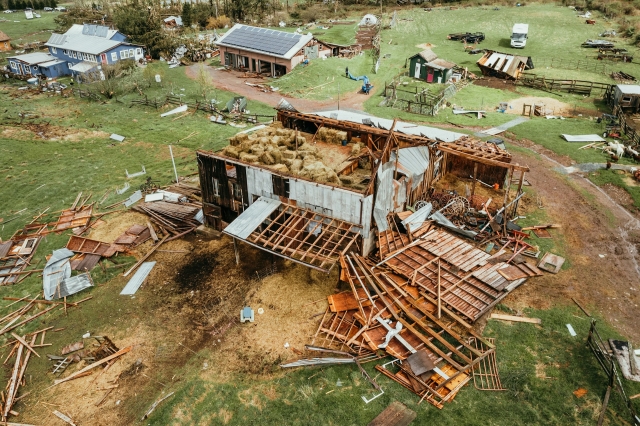The growing number of natural disasters in the US has homeowners worried. A recent Bankrate survey showed that one in four American homeowners is not financially ready to deal with the costs of extreme weather. They actually feel vulnerable against flooding, hurricanes, tornadoes, wildfires, severe storms, heavy snow, and extreme heat or drought.
On the other hand, there are smart homeowners with a plan for everything, from structural reinforcement to flood damage restoration and fire-proofing measures. The truth is that homeowners can improve their defenses against natural disasters with a proactive approach and timely action once the calamity strikes.
These steps can protect lives and property, reduce losses, and speed up recovery in the aftermath of unpredictable events. In this article, we will share a few practical steps that can help homeowners build their defenses against natural disasters.
Be Aware of Potential Risks
Understanding the local threats is the first step in disaster resilience for homeowners. Local risks may vary for different states across the country. Climate Cosmos lists ten states that will likely face the most dangerous storms in the years ahead. These include Texas, Oklahoma, Florida, Alabama, Mississippi, Kansas, and Nebraska.
Similarly, some areas may be prone to floods, earthquakes, wildfires, or cyclones. Research historical disaster patterns, consult local authorities, check online resources, and track relevant weather alerts to understand your risk level. Consider flood zones, seismic areas, and proximity to forests or coastlines. Such information is invaluable for executing future protective measures.
Besides checking historical patterns, analyze recent natural disaster records and probability maps for your region. You can also sign up for community warning systems and weather alerts. Joining neighborhood preparedness groups for shared learning and resource pooling is a good idea.
Reinforce Your Home's Structure
Natural disasters can strike without warning, but you can stay ahead by foreseeing them and building a sound home. Retrofitting and using disaster-resistant construction materials can be your best defense against destructive events. According to ICF Builder magazine, resilience is an often-overlooked factor. However, the right materials should not be a preference, but protection.
Experts recommend using reinforced concrete, brick, and steel for foundations and walls to stand strong against wind, water, and fire. Install impact-resistant windows, secure doors, and storm shutters to prevent breakage during hurricanes or earthquake tremors. Secure roofs with hurricane straps and regularly check for loose shingles.
Add sump pumps and waterproof the basement against flooding, and install drainage systems sloping away from the home. For homes in earthquake-prone zones, reinforce load-bearing walls and install bracing frameworks to absorb shocks. Regular structural assessments by professionals can identify vulnerabilities and guide smart upgrades for older homes.
Have an Emergency Plan
Being prepared for emergencies is as important as fortifying your home against natural disasters. According to the Red Cross, emergencies like fires and floods can happen anywhere, and being prepared keeps you a step ahead. The steps may differ in different situations; for example, you will have to shelter in place during a winter storm but evacuate when a hurricane hits.
A comprehensive emergency plan makes every household member aware of what to do, where to go, and how to communicate during a natural disaster. Ensure that you create awareness beforehand. Draw floor plans showing two escape routes from every room. Choose meeting places both nearby and outside your neighborhood. Also, assemble and maintain a survival kit with essential supplies.
When it comes to emergency preparedness, think about restoration too. You may have to do more than you imagine. Advanced 24/7 Restoration notes that remediating flood damage requires more than water extraction and drying. You will also have to work on mold remediation. Hiring specialists is the best bet because they offer end-to-end services.
Invest in Home Insurance
Home insurance provides a crucial safety net against natural disasters, covering damages to the structure and contents. According to the Environmental Defense Fund, the impact of climate change on insurance cannot be undermined. Premiums have increased, and finding adequate coverage is challenging, putting homeowners at risk.
Smart homeowners look for policies that provide cover against fire, flood, earthquake, cyclone, and other named perils. Even better, they choose comprehensive plans that include coverage for alternative accommodation, valuables, and accidental breakdowns. They ensure coverage for both the building and its contents, such as appliances, electronics, furniture, and jewelry.
Besides choosing insurance wisely, you must review policy details annually and confirm coverage for recent upgrades or new risks, such as a basement renovation or new appliances. Compare different providers and add useful riders like emergency purchases or post-disaster cleanup.
FAQs
What are the things that your house protects you from?
A house shields its occupants from wind, rain, fire, cold, heat, and theft. It is also a line of defense against many types of natural hazards, such as floods, hurricanes, earthquakes, landslides, and man-made threats. Additionally, homes offer emotional comfort, safety, and privacy to families.
What are the essential survival kit items?
To begin with, a basic survival kit should include at least 72 hours' worth of bottled water and non-perishable food. First-aid supplies, prescription medications, and medical information are also crucial. Other items include a flashlight, batteries, portable charger/power bank, blanket, warm clothing, and sturdy shoes. Also, keep the copies of essential documents (IDs, insurance) and sanitation supplies handy.
What to do after a natural disaster hits?
The first step after a disaster hits is to check for injuries and safety hazards in your surroundings. Seek shelter if home is unsafe and use your emergency plan for reunion and support. Keep track of official updates and avoid returning home until authorities confirm it's safe. Take photos of any damage for insurance claims and contact insurance providers promptly to initiate claims.
Natural disasters are unavoidable, but preparedness makes it easier to get through. A structurally sound home is your best defense. You may have to evacuate in some situations, so an emergency plan is equally crucial. Most importantly, you should be emotionally strong and resilient to deal with this phase.






